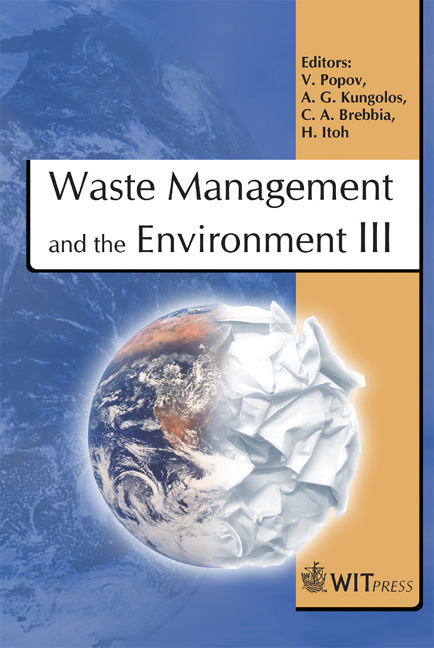Utilisation Of Two-stage Waste Incinerator Bottom Ash As A Cement Substitute In Concrete
Price
Free (open access)
Transaction
Volume
92
Pages
10
Published
2006
Size
448 kb
Paper DOI
10.2495/WM060101
Copyright
WIT Press
Author(s)
F. Kokalj & N. Samec
Abstract
Waste incineration still seems to be an essential technology in the concept of integrated waste management. However, the desirable quantity of waste incineration residue needs to be as low as possible. Therefore, related optimization of two-stage waste incineration technology has been performed with the main goal of producing lower amounts of boiler ash, fly ash and flue gas-treatment residue, all classified as hazardous waste. Most of the combustion residue should be incinerator bottom ash. Tests were performed on light fraction of municipal solid waste in a two-stage pilot scale waste incineration plant. The goal of this investigation is to present utilisation possibilities of waste light fraction incineration bottom ash as a cement substitute in concrete. The produced incinerator bottom ash, formed in the primary chamber of the twostage incinerator, was analysed, tested and compared to other incinerator bottom ashes and cement. High resemblance of investigated bottom ash to cement was determined compared to other bottom ashes. Compressive and flexural strength and slump test were performed to characterise incinerator bottom ash and cement mixtures in concrete. It was found that after 28 days the flexural and compressive strengths of the binder linearly gradually decreases. The results show that it is possible to substitute 15 wt% of cement where low strength concrete is required. Keywords: incinerator bottom ash, waste incineration, two-stage incinerator, concrete. 1 Introduction Municipal waste – although classified as non-hazardous – still causes air, water and soil pollution during its decay when deposited in landfills without proper
Keywords
incinerator bottom ash, waste incineration, two-stage incinerator, concrete.





